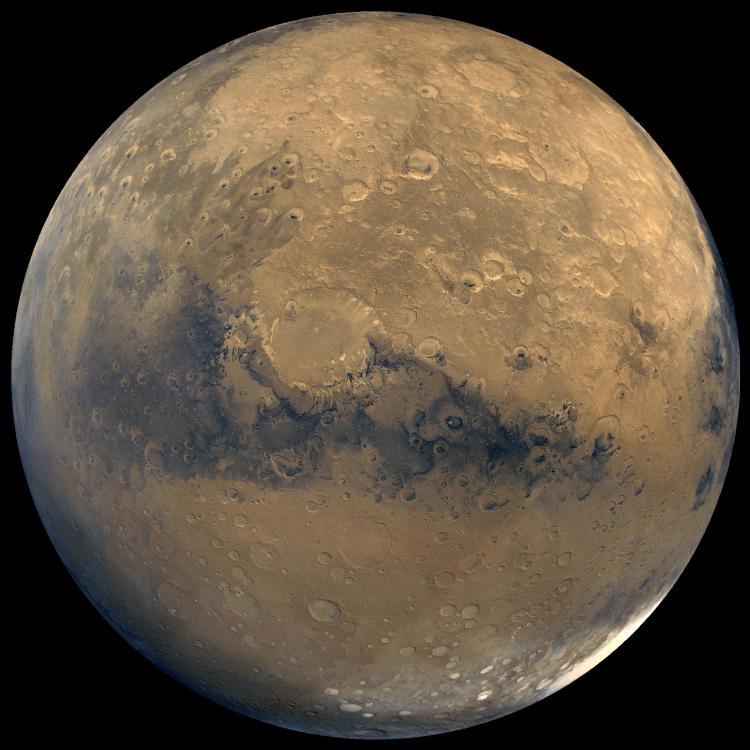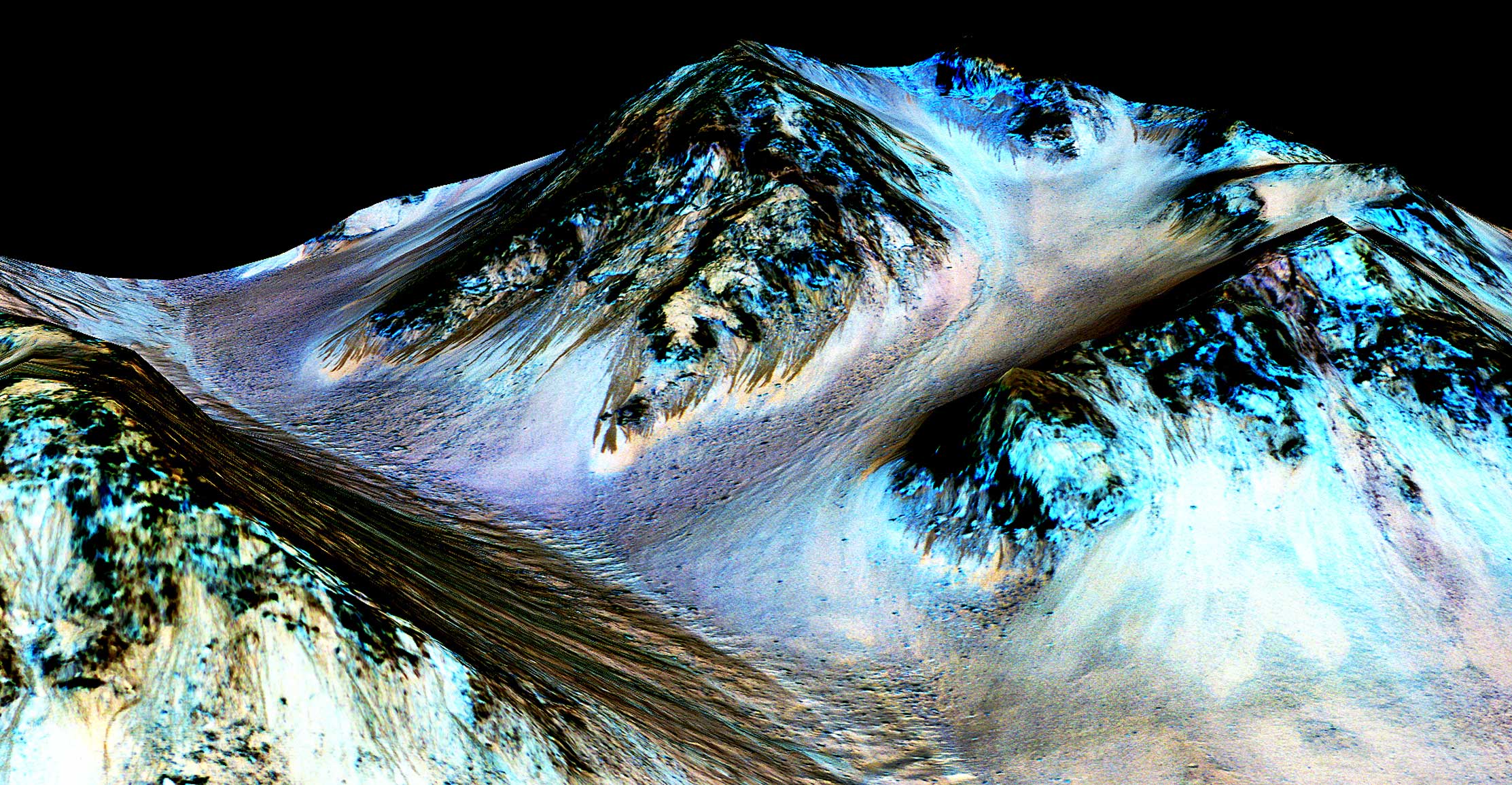Oct 9th, 2015, 04:53 PM
Life On Mars? Reflections on the Red Planet

The Red Planet. (Photo: NASA)
Yes, Discovering Water On Mars Is A Big Deal
Are we alone on Earth? Where did life come from?
These are questions every sentient human has asked throughout their existence. Last month we got one step closer to finding answers. On September 28th, NASA confirmed that they have found evidence that liquid water currently flows on Mars. Using the Mars Reconnaissance Orbiter (MRO), researchers detected "signatures of hydrated minerals on slopes where mysterious streaks are seen on the Red Planet.” They went on to describe how these signatures shift and change, indicating liquid flowing over time. Prior to this, we knew only that ice existed on the planet.
This is a massive discovery that holds unknown possibilities for the future. Sadly, there are a lot of people who simply do not care about this discovery nor share in the wonderment of science in general.
Color-augmented photo showing the trails of water flowing. (Photo: NASA)
The following is a list aimed at convincing these people that this is important and relevant to every individual on the planet:
1. The Big Questions
On our current planet, there is a general rule of thumb: where there is water, there is life. Even in the Atacama Desert in South America, the driest non-polar desert in the world, microbial life can be found in the salty moisture. There is no reason to think that, once we retrieve samples of the salty Martian water, we won’t find life. That in itself would change the world. We would know that we are not alone. If life exists on another planet, it is reasonable to assume it can be found everywhere in the universe.
Taking this to an even crazier place, three billion years ago Mars was a much more hospitable planet with more liquid water and possibly large lakes and oceans. It may even have been a fertile planet before Earth was. There is even evidence that Earth lacked certain chemicals at the time life formed -- but Mars possessed them. Based on this premise, there is a hypothesis called panspermia that postulates that life originated first on Mars. Then through a large impact from an asteroid, debris containing microbial life was jettisoned out of the Martian atmosphere and reached Earth, bringing the seeds of what has evolved into our living world here -- including us. This hypothesis may actually be testable if we do find life in the water. If we analyze that life and we find DNA, it could give clues to the very genesis of existence as we know it.
2. New Technology
Solar cell technology had been developing for decades by the time Vanguard 1 (the first solar powered satellite) was sent into orbit in 1958. However, because of this application an entire new field of advancement was created. Today, all satellites are solar powered, along with many homes, cars, and who knows what else going into the future.
Examples like this show that we can never tell where one seemingly specific, or insignificant, new technology can lead. Through the space program we’ve gained water filtration and freeze drying, an array of interconnected satellites, and advancements in computing and medicine. These are simply by-products of our quest for knowledge and thirst for exploration. It is impossible to say what advancements will come from this particular discovery, or from the coming manned missions to the red planet, but we can be certain that they will be equally monumental.
3. A New Home
With climate change worsening, the over-use of natural resources, and the rapid increase in population, our planet is getting less and less habitable. Eventually, we will need a new, or at least a second, home. Scientists and futurists agree that for the long-term survival of a civilization, it must expand beyond its home planet. (They also say it needs to eventually harness the entire energy of stars. See: The Kardashev Scale)
Terraforming Mars. (Rendering by Daein Ballard)
This may seem unrealistic, but it could very well be possible. Through a process known as terraforming, we could be able to reintroduce an atmosphere by pumping greenhouse gases into the thin air of Mars. This would warm the planet, melting the ice, creating a higher abundance of liquid water, and eventually sustaining plant life which would be able to take over the job of regulating the air. This process would take hundreds, maybe thousands of years, but it’s on this scale that we should be thinking about ourselves in the universe.
The first step of this process isn’t too far away. In the late 2030s, the first manned mission to Mars is planned. While this and the following missions will be science and exploration based, the eventual goal will be a permanent colony. An obstacle to this has been that Mars is far, and you have to pack everything you’re going to want on your trip. But now, with liquid water in substantial quantity, it may be possible to actually have a water source on Mars for astronauts and eventual inhabitants to draw from.
(We'll dance our lives away in the ballrooms of Mars)
It was the moon landings almost fifty years ago that inspired a generation to reach for the stars. However, over time this sense of wonder and thirst for exploration has dwindled, along with NASA’s budget. Now is the time for a space renaissance to inspire this generation. This latest discovery can do that.









